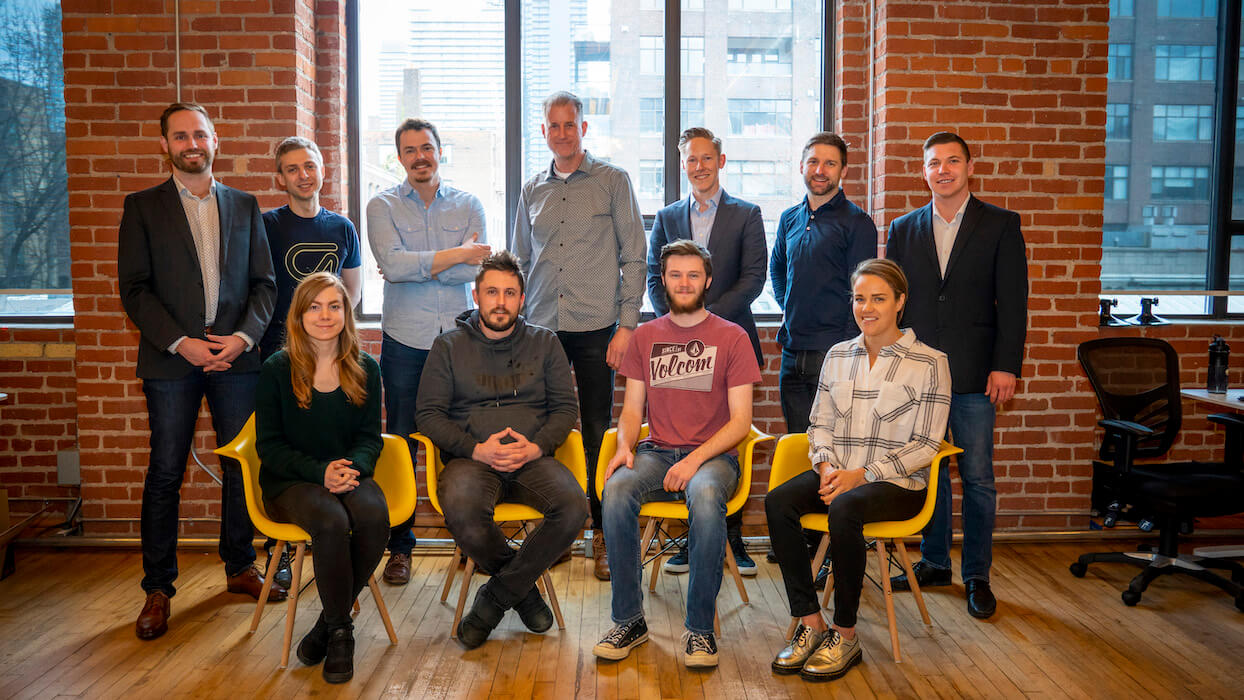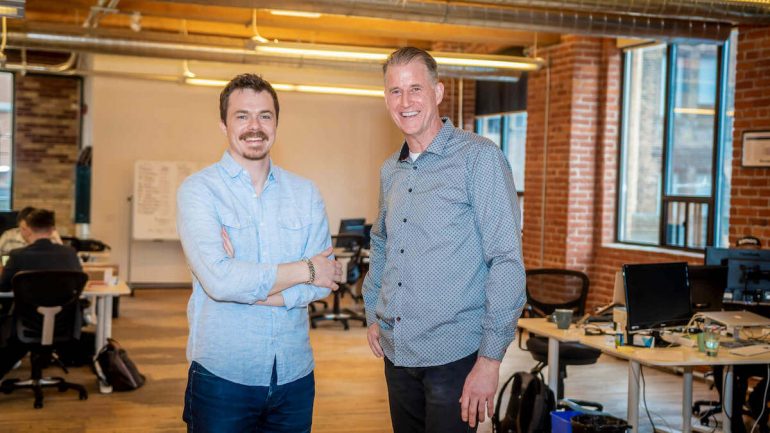Toronto-based computer software company Parity, which uses technology to reduce carbon emissions for condos and multi-tenant buildings, has raised $5 million CAD to help with its goal of making urban living sustainable.
“We’re taking half a million cars off the road with this company alone.”
Often times large industrial activities, agriculture, and vehicles are blamed for causing the majority of greenhouse gasses that have severe detrimental effects on our planet. However, numerous studies have shown that urban cities are actually bigger culprits when it comes to emissions.
Statistics from a World Bank report found that urban areas currently account for more than 67 percent of energy-related global greenhouse gases, expected to increase to 74 percent by 2030. According to a UN Global Status Report from 2017, buildings and construction account for 39 percent globally of energy-related to one such greenhouse gas emission, C02.
This is the problem Toronto-based Parity is trying to solve. The company has developed software that can help buildings not only reduce their C02 emissions, but save money while doing it.
Unlocking data, limiting CO2
Parity’s software is building agnostic, able to connect to any operating system or hardware, in any type of commercial or multi-residential building. It uses AI and deep learning to separate HVAC operations, separately monitoring hot and cold water, as well as piping and air systems.
“Almost like putting a smart thermostat on a building’s entire HVAC system.”
“[It’s] almost like putting a smart thermostat on a building’s entire HVAC system,” said Brad Pilgrim, Parity’s co-founder and CEO. “We’re doing it for fractions of that cost because we’re breaking down the components that you actually need to manage the building.”
Parity’s software, which runs on the cloud, then uses that “smart thermostat” to collect and analyze data to help those systems run more efficiently. The machine learning algorithms send set data points into the building’s main program logic computer, which is essentially the operating system for HVAC.
“What we’re doing is unique in the sense that we’re taking data that has never been available before and we’re able to capture it, store it, sort it, and make sense of it where no one has taken that deep dive in the past,” stated Pilgrim. “These fields of data are available [and] we need to make them meaningful and then understand how to control the buildings on those data sets.”
One way that Parity’s software uses machine learning is for predictive weather control. By taking into account weather forecasts for the next day, for example, the algorithms can better understand and control the heat latency in a building and incorporate that into pre-heating and cooling. By doing this Parity said it is able to save 25 to 35 percent on heating and cooling bills.
RELATED: MineSense closes $23.5 million to reduce CO2 emissions in mining
Parity’s software works with any type of building, regardless of age (the company also works with buildings to supply hardware). According to Pilgrim, Parity’s software has the same proportionate effect in different buildings, creating anywhere from 30 to 40 percent in energy savings. This can lead to average annual savings of $50,000 to $120,000, he stated.
“We’re getting up to a quantum of savings that makes people actually take notice,” Pilgrim said. “Really what we’re doing is saving on a commodity today and the cost avoidance is really happening immediately, but also exponentially over the course of time. We’re hoping to flatten out the cost of operating buildings, make urban living sustainable.”
Saving money and the climate
Parity was founded in 2015 by Brian MacLeod, Parity’s chief operating officer, and Pilgrim, who joined MacLeod in early 2016. MacLeod had previously been working on a project that found a way to measure gas usage in buildings. Pilgrim brought years of experience working in the US solar industry for multiple renewable energy companies.
“That was really where I cut my teeth in the energy industry, where I found a passion for solving big problems, and those big problems really seemed to be focused around climate change,” Pilgrim told BetaKit.
After realizing renewable did not necessarily present a viable business opportunity, Pilgrim decided to look at the other end of the spectrum, rather than finding energy production solutions, he decided to focus on consumption.

He and MacLeod decided to combine their expertise to address a problem that the majority of residential buildings have – high levels of energy consumption. Central operating (HVAC) systems, handling heating, cooling, and movement of water, consume the most amount of energy in buildings, in turn releasing large amounts of CO2.
Running and managing HVAC systems also cost a lot of money. Pilgrim stated that based on Parity’s research anywhere from 30 to 50 percent of a building owner’s operating budget is spent on energy. He noted, however, that energy is also the largest “moveable” cost.
“[Energy is] really the only opportunity in a building to bring net [new] money back to the building,” Pilgrim stated, “So we said, well who’s doing anything about the HVAC systems and we looked around the industry, addressed the competition overall in North America, and found that nobody was really doing it. It was sort of the same old, same old.”
Typical energy-efficient building automation systems (BAS) for HVACs come from the operating equipment manufacturers (OEMs) like Honeywell, Siemens, Johnson Controls, and Schneider Electric, which use proprietary software that Pilgrim said are usually hard to operate, require a service contract with the OEMs, and have limited capabilities.
RELATED: Alate Partners launches with $40 million in funding to boost real estate tech industry
Pilgrim noted that those BAS systems offer only small increases in energy efficiency and can cost anywhere from $250,000 up to $600,000.
“How we’re unique is there is a big gap in the industry right now,” he stated. “No one is concentrating on the software…through statistical and relational databases [Parity is] able to look at that data, make sense of it, and then incorporate that back into a control algorithm that will run the building better.”
Bootstrapping to Series A
Parity currently works with some of the biggest property management companies in Canada and the US, including Ontario-based FirstService Residential, real-estate developer Crossbridge Condominium Services, DEL Property Management, and Wilson, Blanchard Management. It sells to commercial, multi-residential, and real estate investment trusts (REITs) – companies that own or finance income-producing real estate.
Parity bootstrapped for its first few years, making $1 million in sales in its first year, and just under $3 million in booking and sales in its second year, before deciding to raise a Series A. The $5 million round closed earlier this year, with the investment coming solely from ArcTern Ventures, led by its managing partner Tom Rand. Rand, who focuses his efforts on mitigating carbon emissions, cleantech VC, and public advocacy, saw Parity as a perfect investment.

“Climate change is the single greatest issues facing our generation,” Rand said. “What Parity has is a very capital efficient, very broadly applicable, very deep energy efficiency play.” He pointed to what he called the company’s reasonable targets over the next three to five years, stating, “we’re taking half a million cars off the road with this company alone.”
The $5 million investment is the first made through ArcTern’s Fund II, which had its first close in October. The cleantech-focused firm raised $60 million CAD, towards its target of $100 million, from LPs including OMERS and Equinor, an oil and gas company that claims to be working on actively reducing climate emissions.
There is also strategic overlap in ArcTern’s investment in Parity when it comes to OMERS, since the pension fund owns Oxford Properties, one of the world’s biggest real estate investment, development, and management companies, which manages approximately $50 billion in real estate assets on behalf of its co-owners and investment partners.
Parity plans to use the funding to further its presence in the US, expanding its operations to New York, Boston, Chicago, Philadelphia, and other urban North Eastern cities, which Pilgrim stated to have the most need for energy consumption solutions. The company will also use part of the $5 million to grow its sales and marketing, as well as increase its operating and development team, hiring people to run offices in New York, Chicago, and Boston. It plans to grow its team, which is currently around 15 employees, to more than 35 in the coming year, with hopes to continue to double that in the following years.
RELATED: Ridesharing app Facedrive launches with CO2 emissions reduction plan
Pilgrim noted that Parity’s algorithms are built to adapt as they receive and process more data. He stated that Parity becomes even more useful over time as it’s software learns a building’s patterns, turning that into more energy and cost savings.
“Every single day we are removing thousands of pounds of CO2 from the atmosphere and that’s really what we’re about,” he stated. “That’s what the company as built on, that’s our culture, we’re a culture of impact a culture of empowerment…it gives meaning to what we’re doing.”

